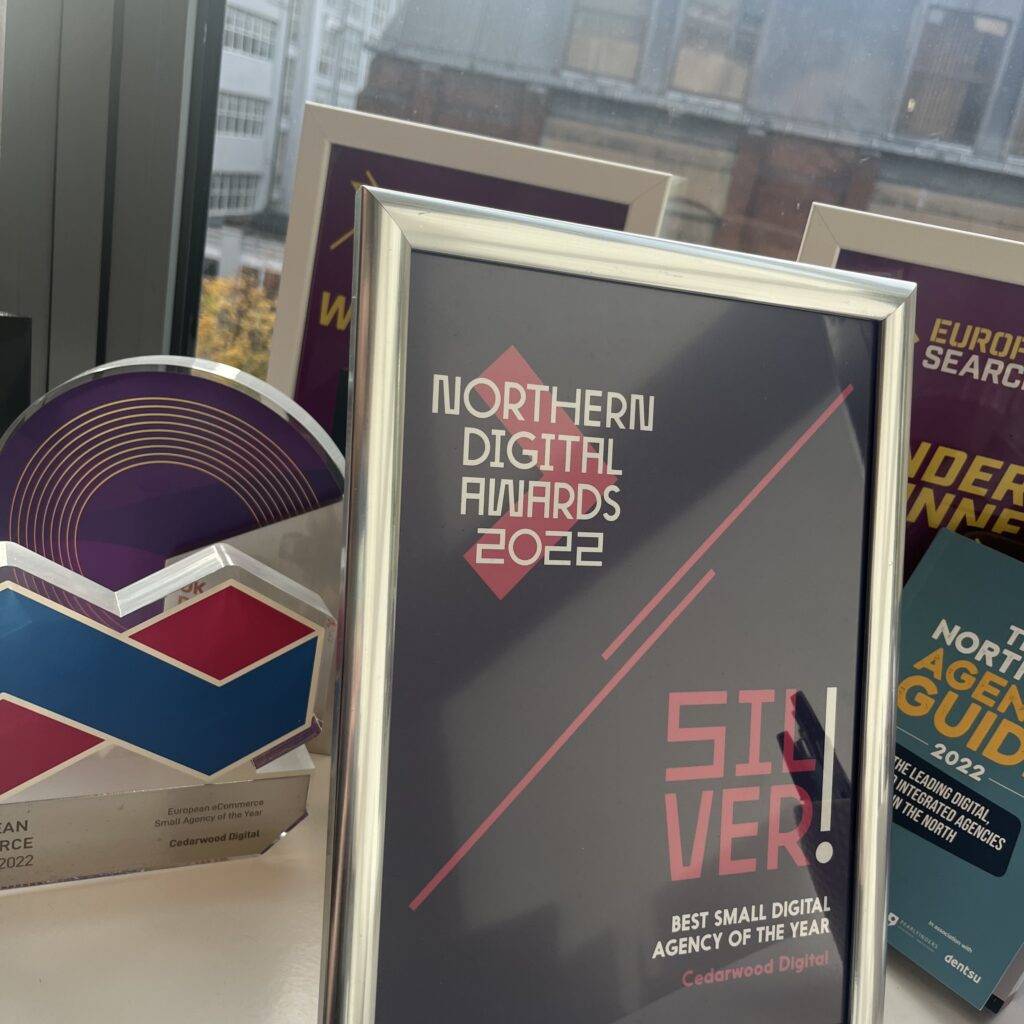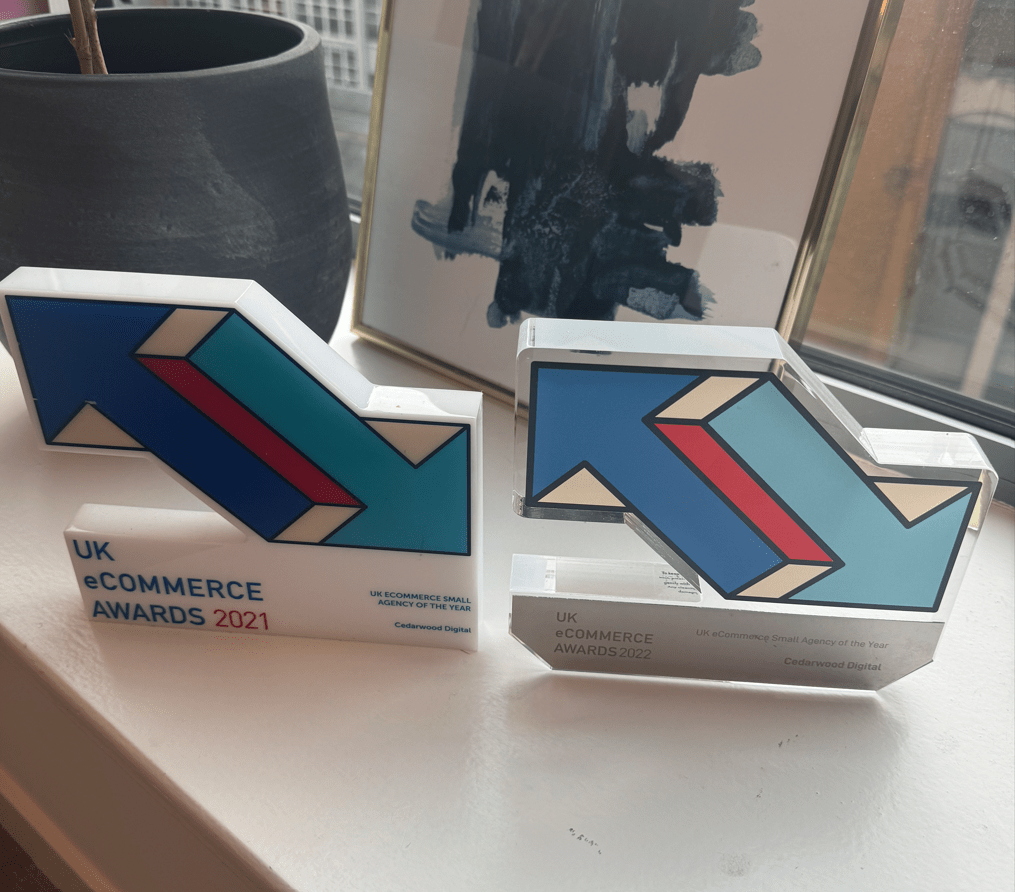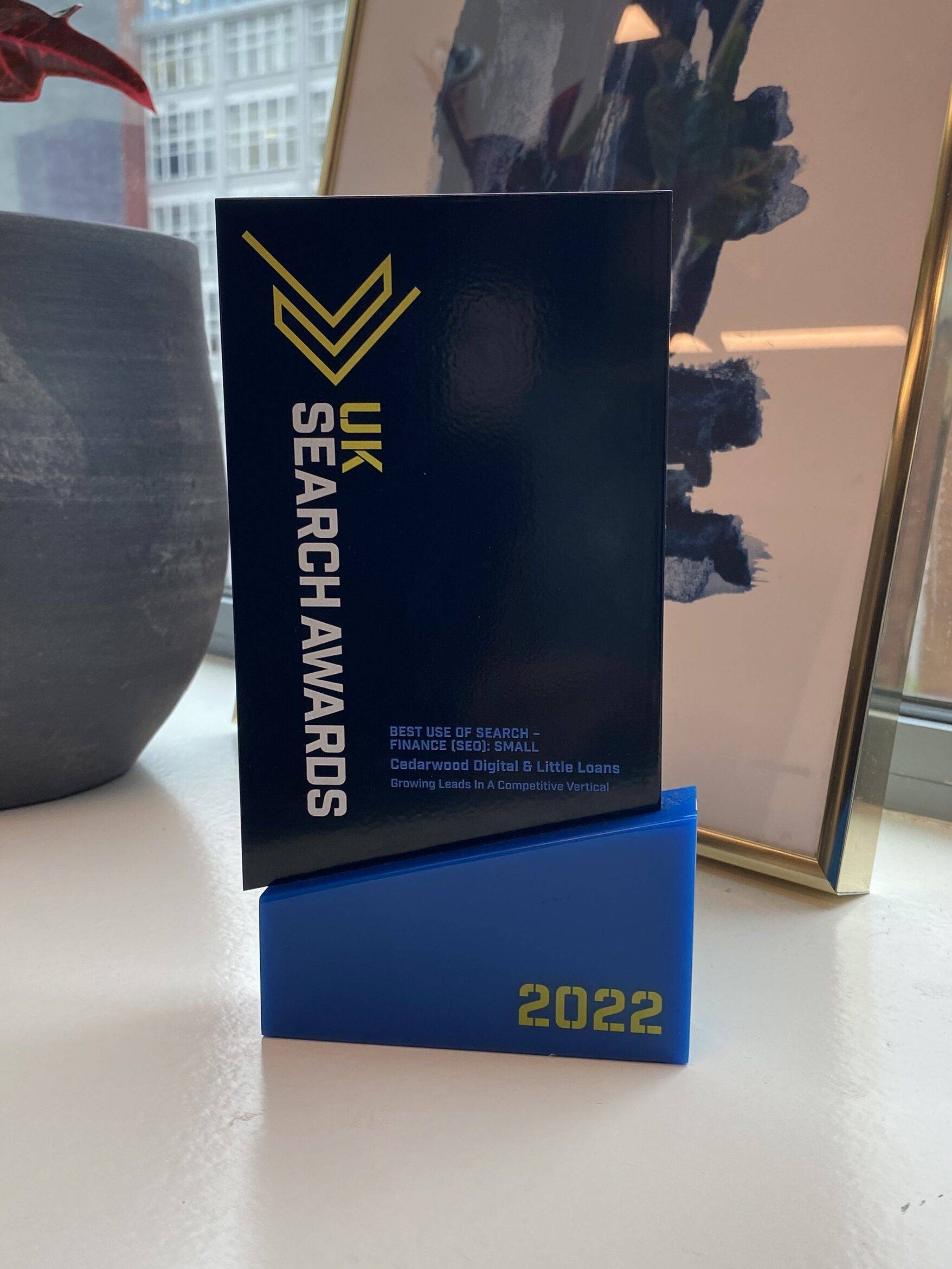With Google’s recent Helpful Content algorithm updates, it is more important than ever to write content primarily for the user. Producing content that will perform well on search engines now comes down to creating genuinely valuable content.
As SEO content writers, it’s vital to understand your intended audience, and their user intent. If you create content for the user you’ll see the nice added benefit of high ranking positions.
The good news is that the SEO team at Cedarwood Digital knows the exact framework to make your content more cost effective than ads – writing content that your readers and Google will love. Keep reading for our tried and tested top tips for expert SEO content.
Why Content For SEO Matters
Is optimising your content really that important? We’re here to tell you that yes, you really should care about content and consider SEO best practices when creating content.
Once you rank on the first page of Google you’re more likely to receive heaps of relevant and traffic to your website. And, as paid advertising costs rise and social media engagement gets increasingly hard to acquire, organic traffic is more important than ever.
As a business owner, the best decision you can make right now is investing time and energy in organic search. Make sure your site’s content is written with SEO firmly in mind and you’re guaranteed to increase visibility, and users finding your services.
Our Top Tips
So, you know you need to tailor your content for your users and search engines, but how exactly do you go about this?
Here are the tactics which have seen our clients’ websites shooting up the ranks…
Keywords:
Whilst there’s no big secret formula for ranking in the SERPs, understanding your target keywords and using them correctly will make a huge difference.
It’s essential to do your research, so you know what words people are using when looking for the services your company offers.
You’re going to want to get these keywords naturally embedded in your content, and it’s also a good idea to use related words. The fancy word for this is latent semantic indexing, but it basically comes down to using words that go well with the keywords you’ve researched.
A hack for finding these words is simply to enter the main term into Google search, and noting down the related keywords that Google lists:
But be careful not to get so caught up with these keywords and related keywords that you lose track of keeping your writing user-friendly! There’s nothing more off putting than a paragraph of content where every other word is the same. As an SEO copywriter, it’s important to strike a balance.
Another top tip is to choose your keywords wisely. Keywords that have a lower search volume can be just as valuable – as you have more opportunity here to rank high. A good content writer should assess the amount of competition around each keyword
Content Readability:
Another thing to consider when optimising your content for SEO is its readability. This idea is pretty self-explanatory. Readable content is very easy to understand and written simply, using short words and sentences.
A fact you might be surprised to learn is that the average reading age in the UK is only 9! (According to the National Literacy Trust). Remember that your audience will include people with dyslexia, and people with english as a second language etc.
Google particularly cares about this readability because it affects user experience. Since 2021, Google’s algorithm has been specifically prioritising sites with a strong user experience. So this comes down to a website’s visual design, technical architecture and readability of its content.
The good news is there’s a bunch of great softwares available to give you a helping hand with readability. Some of our favourites to check out are:
>Semrush Readability Assistant
If uploading your content through WordPress, it’s also good to know that there is an SEO plug-in for WordPress (Yoast) which will assess your readability, amongst other factors.
Write helpful content:
Earlier this year, Google updated its helpful content system algorithm. This update allows Google to “more deeply understand content created from a personal or expert point of view”.
There’s now a focus on ranking content with “unique expertise and experience”. Equally, content that appears to have been primarily created to rank well is targeted and downgraded. So. creating content that your users will actually find helpful is more important now than ever
This is in order to help Google show more “hidden gems” in its search results. So, the question you might now be asking is whether your content is a hidden gem? Well, is it actually useful? Written for your users ? Predominantly focused on helping users, and just recycled information? These are the qualities to strive for next time you start typing.
Quantity *and* quality
We’ve seen in the past and the present that Google algorithms tend to reward informative content that fits its purpose and penalises thinner content.
‘Thin content’ is the term Google uses to describe ‘low-quality or shallow pages’. These pages offer little value to a user and are not ‘substantially unique’. Content that could be hit by a thin content penalty includes things like entirely AI-generated content, and content scraped from other sources.
This doesn’t necessarily mean that a shorter word-count will prevent your site from ranking. Rather than aiming for a specific ‘magic formula’ word count, just focus on making sure your content sufficiently answers the users’ intent.
It can be the case then that longer content is better simply because you can share more information. Length also gives you the flexibility to present your information in varied ways – your readers and Google love headed subsections, lists and tables. However, a shorter piece of content can be equally as valuable, providing you’ve thoroughly researched your target audience, and what they are looking to find out.
When ensuring your content is high-quality, you’ll also want to bear E-E-A-T in mind. This acronym stands for ‘experience, expertise, authoritativeness, and trustworthiness’ and these are the criteria Google uses to assess your website. Demonstrating these qualities in your content will provide your users with helpful and reliable information and this has the side effect of helping your search engine performance. New to E-E-A-T principles? Check out our in-depth rundown of how to make your content align.
Use Varied Content Types
On this point, displaying content in visually appealing ways is a bright idea for SEO. Using helpful videos and pictures is fab for readers. In the age of TikTok and ever-shortening attention spans, no-one wants too much grey text. Images make your content more appealing and can help make your ideas more understandable.
Breaking up your content with infographics and charts is also a good idea because these have the extra advantage of securing you backlinks. Free software like Canva and Infogram will be your best friend here. Take a look at this infographic we put together highlighting new film releases this month:
Stay On Top of SEO Trends
Our final tip is a self-explanatory one – keep up to date with Google’s algorithms and the latest social trends. Search engines and SEO techniques are constantly changing, and content writers need to keep up!
Adjust your writing in accordance with changes to algorithms, and user preferences. A top tip for staying updated is to subscribe to some SEO newsletters. SEOFOMO and The Moz Top 10 are a couple of the best run-downs of recent news in the SEO world.
Can I Do My Own SEO?
You definitely can – there’s no specific qualification needed to write good content for SEO. Online guides like this one can be a great starting-point. However, an SEO professional, with heaps of experience, will likely be able to produce more effective content for your site.
SEO is a slow and steady process, it can take months and months to see the results of your work. Because of this, the trial and error approach could see you wasting lots of time and effort. As SEO experts, we have the know-how on how to execute a good content strategy. By employing the help of an SEO agency, you have the assurance that you will see results by a set time.
How Cedarwood Digital Can Help With Your SEO Content Creation?
Our SEO team at Cedarwood have years of experience helping clients write content with SEO in mind. We know Google’s search guidelines like the back of our hand and how exactly to drive up your visibility and sales.
Contact us today to find out how we can help you write content your users (and ultimately the search engines) will love.

![[blog]_[How To Write Content For SEO]_[Blog Picture]](https://cedarwood.digital/wp-content/uploads/2023/11/wpimage-id13321width562pxheightautosizeSluglargelinkDestinationnone-figure-classwp-block-image-size-large-is-resizedimg-srchttpscedarwood.digitalwp-contentuploads202507Image-1-1024x-71-900x506.png)
![[case studies[ [northern digital awards 2024] [case study templates]](https://cedarwood.digital/wp-content/uploads/2023/11/How-we-delivered-100-top-tier-links-by-jumping-on-a-trending-topic.-2-900x506.png)


![[blog]_[How To Track And Monitor Your SEO Performance]_[Blog Picture]](https://cedarwood.digital/wp-content/uploads/2023/11/wpimage-id13321width562pxheightautosizeSluglargelinkDestinationnone-figure-classwp-block-image-size-large-is-resizedimg-srchttpscedarwood.digitalwp-contentuploads202507Image-1-1024x-72-900x506.png)
![[blog]_[Using GA4 To Drive Actionable Insights For SEO]_[Blog Picture]](https://cedarwood.digital/wp-content/uploads/2023/11/wpimage-id13321width562pxheightautosizeSluglargelinkDestinationnone-figure-classwp-block-image-size-large-is-resizedimg-srchttpscedarwood.digitalwp-contentuploads202507Image-1-1024x-73-900x506.png)
![[case studies] [ Cedarwood Win UK Ecommerce Agency Of The Year!] [case study templates]](https://cedarwood.digital/wp-content/uploads/2023/11/How-we-delivered-100-top-tier-links-by-jumping-on-a-trending-topic.-1-900x506.png)


![[blog]_[Why Building Backlinks To Your Website Is So Important]_[Blog Picture]](https://cedarwood.digital/wp-content/uploads/2023/10/Untitled-design-66-900x506.png)







![[blog]_[How SEO Can Help Grow Your Business]_[Blog Picture]](https://cedarwood.digital/wp-content/uploads/2023/10/wpimage-id13321width562pxheightautosizeSluglargelinkDestinationnone-figure-classwp-block-image-size-large-is-resizedimg-srchttpscedarwood.digitalwp-contentuploads202507Image-1-1024x-74-900x506.png)
![[case studies[ [uk search awards finlaist] [case study templates]](https://cedarwood.digital/wp-content/uploads/2023/10/How-we-delivered-100-top-tier-links-by-jumping-on-a-trending-topic.-3-900x506.png)

![[blog]_[How To Improve Your Website's Domain Authority]_[Blog Picture]](https://cedarwood.digital/wp-content/uploads/2023/10/Untitled-design-67-900x506.png)


![[blog]_[A Strategy For B2B SEO]_[Blog Picture]](https://cedarwood.digital/wp-content/uploads/2023/10/wpimage-id13321width562pxheightautosizeSluglargelinkDestinationnone-figure-classwp-block-image-size-large-is-resizedimg-srchttpscedarwood.digitalwp-contentuploads202507Image-1-1024x-75-900x506.png)



![[blog]_[Will AI Change SEO?]_[Blog Picture]](https://cedarwood.digital/wp-content/uploads/2023/10/wpimage-id13321width562pxheightautosizeSluglargelinkDestinationnone-figure-classwp-block-image-size-large-is-resizedimg-srchttpscedarwood.digitalwp-contentuploads202507Image-1-1024x-76-900x506.png)
![[blog]_[SEO For Financial Services]_[Blog Picture]](https://cedarwood.digital/wp-content/uploads/2023/10/wpimage-id13321width562pxheightautosizeSluglargelinkDestinationnone-figure-classwp-block-image-size-large-is-resizedimg-srchttpscedarwood.digitalwp-contentuploads202507Image-1-1024x-77-900x506.png)

